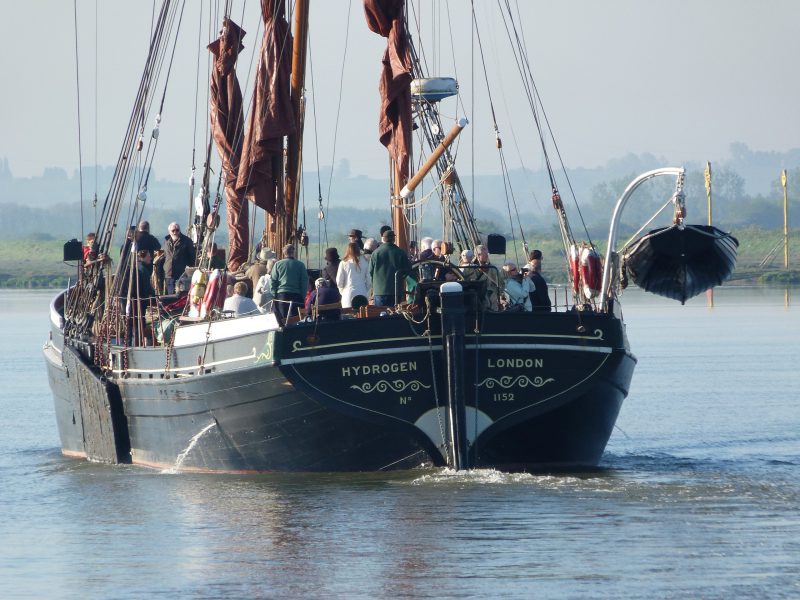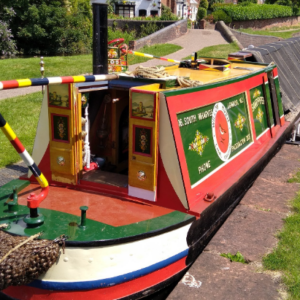Projects: Marine epoxy: breathing new life into Thames barges

Shipwright Ralph Springett was one of the first people in the UK to use WEST SYSTEM® epoxy products. Forty years later, as he focuses on repairing traditional Thames barges, marine epoxy remains his first choice for light, resilient and reliable repairs.
Ralph Springett remembers well the first time he used epoxy resin, four decades ago on a 45ft asymmetric hull catamaran designed by Olympic medal winners The Prout Brothers, called Phantom Wake.
“People were coming down and looking at what we were doing,” he says. “It was a steep learning curve, because we were used to traditional boatbuilding techniques using frames and carvel planking and so on, then suddenly we could stick everything together!
“It was fascinating,” he adds, “and she was an amazing catamaran: plywood spruce and 45ft but just 1.5 tonnes. She was so was lightly built, and epoxy helped to achieve that lightness.”
The project marked the start of Ralph’s career-long reliance on epoxy. He describes shipwrights as problem solvers: “The job is often as much about physics and maths as it is physical work”. And whether he’s been fitting out steel boats in the Netherlands, teaching boatbuilding in the UK, building a canoe for his son or following his main passion and repairing traditional boats, the cans of marine epoxy have rarely been far from his problem-solving plans.
“I’ve worked with WEST SYSTEM epoxy throughout my career, on all sorts of projects – from glass fibre repairs to sheathing decks” he says. “It has a wide, wide range of applications. Looking back, I do wonder how we managed without epoxy.
“As long as you know how to use it and understand it, it’s amazing what you can do. It’s made repairs possible that we could never do before, and, having used it for 40 years, I know it lasts.”
Using epoxy on traditional Thames barges
For the past decade, Ralph has worked with Topsail Charters in Maldon, Essex, repairing and refurbishing the traditional Thames barges that were once a constant feature of the city’s waterscape.
“Those barges are my passion,” he says. “They’re beautiful and I feel privileged to be able to keep them going. I love that they are old working craft, and it amazes me how they worked years ago, without all the tools and machinery we rely on.”
 In this role, Ralph uses epoxy for a long and varied list of applications. “We always coat deck planks with epoxy because if there are any leaks then water can’t permeate the wood and cause it to rot. We coat hardwoods with epoxy to seal the timber which provides a stable surface onto which paint can adhere. We use a lot of freshly sawn green oak and one of the problems with that is that you can only get great big lumps which crack and distort as they dry, so we coat with epoxy to slow the drying process.
In this role, Ralph uses epoxy for a long and varied list of applications. “We always coat deck planks with epoxy because if there are any leaks then water can’t permeate the wood and cause it to rot. We coat hardwoods with epoxy to seal the timber which provides a stable surface onto which paint can adhere. We use a lot of freshly sawn green oak and one of the problems with that is that you can only get great big lumps which crack and distort as they dry, so we coat with epoxy to slow the drying process.
“We also coat the oak used for rudders because it stops them distorting in the sunlight,” he adds, “and we use epoxy for all sort of things that probably aren’t in the instruction books, too – purely trial and error.”
Breathing new life into Hydrogen
Recently Ralph’s focus has been on restoring Hydrogen, the largest surviving wooden Thames barge. Built in 1906, Hydrogen originally carried cargo out to the UK’s eastern coast, before being used as a supply ship on the River Clyde during World War II. Today, she can be chartered for cruises in London, Essex and East Anglia.
Inevitably, the barge needs regular repair and restoration work – and again epoxy has played a central role. With the huge sections of timber originally used to build Thames barge gunwales no longer easily available, smaller boards of iroko have been bonded together and laminated with epoxy. The hull planking has also been epoxied to prevent water ingress and so have the knees and various pads under the decks.
But perhaps the most ambitious repair is still ongoing, as Ralph and his team replace the main deck beams underneath the mast. “These are massive great iroko beams,” he says. “Normally to replace them you’d have to take the whole deck off, take the cargo coverings off and then take the beams off. That’s an enormous job.
“But we’re actually removing planking and feeding new wood in through the topsides and clamping, scarfing and laminating the beams in situ using epoxy. We’ve never done it before but we decided to give it a try. It’s taking a couple of weeks to do each beam but while it’s saving us a huge amount of effort, it’s not actually a particularly difficult process: the main thing is to think it through.”
Epoxy and modern boatbuilding
Ralph is about to begin training an apprentice, conscious of the need for experienced shipwrights to keep passing their knowledge and experience on. He says it’s one way of overcoming his own concerns that fewer people are learning the techniques needed to repair traditional vessels – and it seems likely that the new trainee will be left in little doubt about his teacher’s thoughts on the value of epoxy.
“WEST SYSTEM epoxy has changed the face of boatbuilding,” Ralph says, by way of conclusion. “It has made things very, very different. The things we can do now, with the old methods, they simply weren’t possible. It has transformed so many aspects of modern boatbuilding.”
To discover how the wide range of WEST SYSTEM epoxies can benefit your work on traditional and modern marine projects, head to our WEST SYSTEM epoxy product page.
Image credit: Ralph Springett and Topsail Charters Ltd




